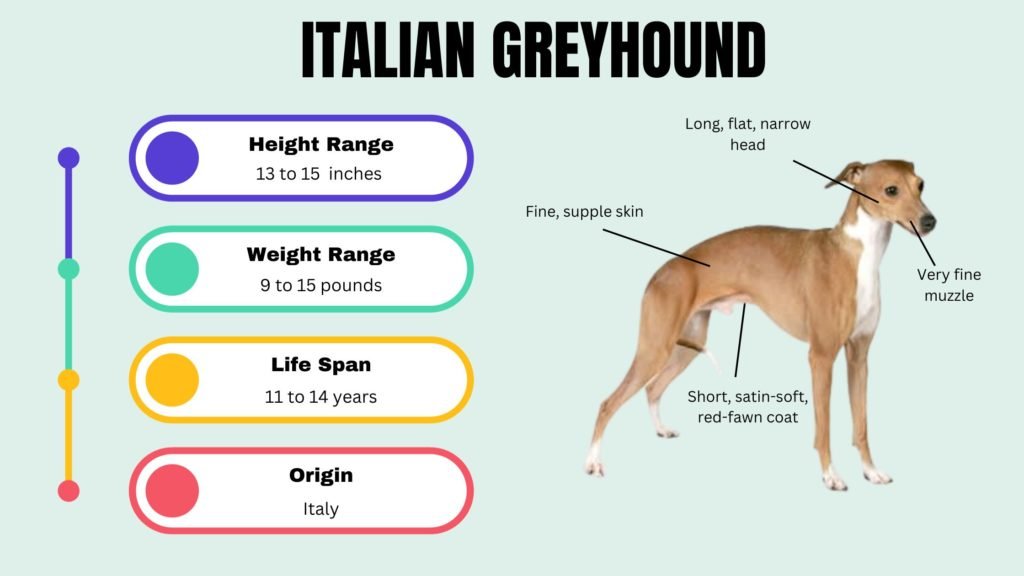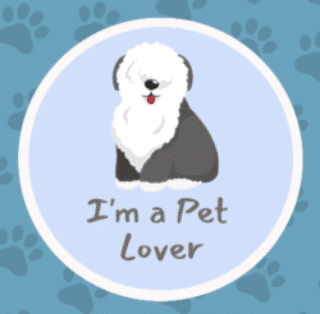Italian Greyhounds History
Tracing the Italian Greyhound’s history is akin to stepping into a time machine that takes us back to the luxurious courts of Renaissance Italy. Even before their Italian fame, these dogs were depicted in ancient Egyptian art, silently testifying to their age-old appeal. The Italian Renaissance was a period of rebirth in art, culture, and intellectual pursuits. It was also during this time that the nobility highly prized Italian Greyhounds. These dogs were more than just pets; they were a status symbol, almost an extension of their owners’ personas. Royal households often had specialized servants to attend to the needs of these dogs, and some even had their portraits painted by renowned artists like Titian. Their role in history did not stop at being the companions of European nobles. During the World Wars, the breed faced the threat of extinction but managed to survive, thanks to dedicated breeders. Thus, the Italian Greyhound has been a survivor, an aristocrat, and a muse, all rolled into one throughout its history.

Italian Greyhounds Characteristics
The Italian Greyhound’s physical characteristics are captivating but extend beyond mere aesthetics. This breed has become surprisingly solid and agile, with a slender build and delicate bones. They are sprinters, capable of bursts of speed that can be awe-inspiring. Yet, their grace tempered this athleticism, making them seem almost fragile.
Their coat is short sleek, and comes in various colors. While the coat is relatively low-maintenance, the breed is susceptible to temperature changes. Italian Greyhounds often require doggy sweaters in the winter and shaded spots in the summer. Moreover, it’s not just the weather that affects them; the breed is also known to be sensitive to certain substances, necessitating careful consideration when choosing food or cleaning products. They generally enjoy good health but are prone to dental issues and should have regular vet check-ups to monitor their well-being. These characteristics make the Italian Greyhound a breed that needs attentive and knowledgeable care in exchange for a lifetime of loyalty and companionship.
Italian Greyhound Personality
Diving into the personality of the Italian Greyhound reveals layers of complexity that are sometimes paradoxical. On one hand, they are incredibly loyal and loving, forming deep emotional bonds with their human counterparts. However, they are also known for their independent streak and can be aloof or selective in their interactions. It’s not uncommon for an Italian Greyhound to decide on a ‘favorite’ human and become almost velcro-like in their attachment.
They possess keen intelligence, often understanding more than they let on. Their sensitivity to their owners’ moods is almost uncanny. When you’re down, they’ll nuzzle you or quietly lay their head in your lap as if understanding the need for comfort. However, they are not pushovers. They can be surprisingly stubborn, especially when they want (or don’t want) to do something.
While often calm and serene, they have moments of playful exuberance, displaying a puppy-like enthusiasm that can be both endearing and surprising given their usual demeanor. They enjoy interactive toys, agility training, and occasionally zoom around the yard. They love their exercise but cherish their downtime, often finding the coziest spot in the house for a nap.
Italian Greyhound Life Span
Italian Greyhounds are known for their longevity, with many living well into their early teens and some even reaching their late teens. This longevity is a testament to the breed’s overall resilience despite its delicate appearance. The secret to their long life often lies in the quality of care they receive, which means regular vet check-ups, a balanced diet, and a loving environment. Common health concerns include dental issues and sensitivity to extreme temperatures, but these can often be managed effectively with attentive care. Even in their golden years, Italian Greyhounds maintain a particular youthful vigor, making them engaging companions for much of their lives. Their long life span gives owners the joy of experiencing an enduring bond transcending different phases of human life, from young adulthood to more mature years.
Italian Greyhound Family Life
Family life with an Italian Greyhound is generally a harmonious affair. These dogs are deeply attached to their families and often form powerful bonds with one particular member. However, they are usually loving toward all family members and even frequent guests. Their small size and generally calm demeanor make them suitable for households of various sizes, from apartments to large homes with yards. Children find playful yet gentle companions in them, but it’s crucial to teach kids how to handle these delicate dogs carefully. Their emotional sensitivity makes them excellent companions for older people, often providing emotional support and love without requiring the same physical exercise as some other breeds.
Italian Greyhound Habitat and Diet
Originally bred for the warmer climes of the Mediterranean, Italian Greyhounds have specific habitat needs. Their slender bodies and thin coats make them sensitive to extreme temperatures. Indoor living is generally recommended, with adequate heating in winter and cooling in summer. Unique doggy clothing might be necessary to help them maintain body temperature.
Regarding their diet, these dogs do best on high-quality commercial or home-prepared food. Being small, they don’t require large quantities of food, but what they eat should be nutrient-dense to support their energy needs and long lifespan. Food promoting dental health is often recommended due to their propensity for dental issues.
Italian Greyhound Temperament
The Italian Greyhound’s temperament is one of its most enchanting attributes. Generally speaking, they are gentle, intelligent, and generous dogs. They have an inquisitive nature, which often manifests in bursts of playful energy, especially when they are young. However, they are equally content to lounge on a sofa, enjoying the serenity and companionship of their human family. While they can be reserved around strangers, they are not overly dedicated and usually quickly warm up to people. They are sensitive to the moods and feelings of their human companions, often acting as emotional barometers in the household.
Italian Greyhound Behavior with Other Animals
Generally, Italian Greyhounds get along well with other animals, especially if they are socialized from a young age. They often enjoy the company of other dogs and can even cohabit peacefully with cats. However, due to their small size and sometimes delicate constitution, caution is advised around much larger breeds with boisterous temperaments. It’s not uncommon for an Italian Greyhound to form a close bond with another pet, frequently seen cuddling or playing together. However, their hunting instincts can sometimes kick in when encountering small animals like rodents or birds, so supervision is advised.
Italian Greyhound Coat Color and Grooming
The Italian Greyhound is adorned with a fine, silky coat that makes the dog incredibly pleasant to touch. This breed comes in various colors, including fawn, black, blue, and sometimes even white with color patches. Some owners opt for a single-color coat, while others find the multi-colored variants more visually striking. The coat is relatively low-maintenance, requiring only occasional brushing to remove loose hairs and distribute skin oils evenly. However, they are prone to getting cold quickly, so many owners opt for a wardrobe of doggy sweaters and jackets, particularly in cooler climates.
Italian Greyhound Health
Italian Greyhounds are generally healthy dogs, but like any breed, they have specific susceptibilities. Dental issues are expected; their small mouths can lead to crowded teeth and a higher risk of dental disease. Besides, they can be sensitive to extreme temperatures due to their thin coats and low body fat. Hip dysplasia and certain eye conditions may also be a concern, but these are generally rare. To ensure your dog’s health, following a regimen of regular vet check-ups, appropriate vaccinations, and parasite control is crucial. When well taken care of, these dogs often live long, healthy lives, stretching well into their teens.
Italian Greyhound Price
Owning an Italian Greyhound can be a somewhat expensive affair, not so much due to the initial purchase price—which can vary between $500 to $2,000 depending on lineage and breeder—but because of the ongoing costs of quality food, regular vet care, and other miscellaneous expenses like grooming and clothing. The investment, however, is well worth the companionship and joy these dogs bring into your life. Remember that adopting from a rescue can be a more affordable option, and you’ll give a home to a needy dog.
Italian Greyhound Trainability
Italian Greyhounds are highly trainable, thanks partly to their intelligence and eagerness to please their owners. However, their sensitive nature means that training should be conducted gently and positively. Harsh training methods can be counterproductive and cause the dog to become anxious or fearful. Socialization from a young age is vital in helping them grow into well-rounded adults. They respond well to reward-based training, and many owners successfully teach them not only basic commands but also more complex tricks and behaviors.
Italian Greyhound Care
Caring for an Italian Greyhound goes beyond providing food and shelter; it also involves catering to their emotional needs. They crave companionship and can become anxious or depressed if left alone for extended periods. Exercise is essential but doesn’t need to be excessively strenuous—a couple of short walks and a play session are usually sufficient for most dogs. Their small size makes them suitable for apartment living, but they appreciate access to a secure yard to run and play safely. Due to their temperature sensitivity, they may require climate-controlled environments and appreciate a cozy blanket or bed to snuggle into.



